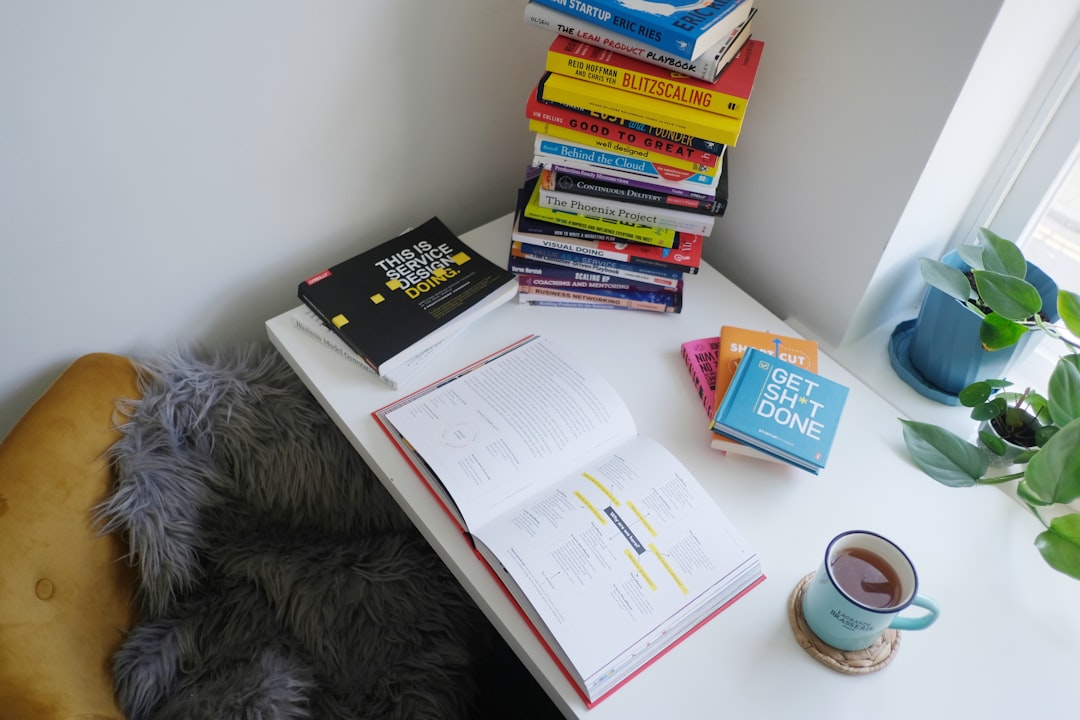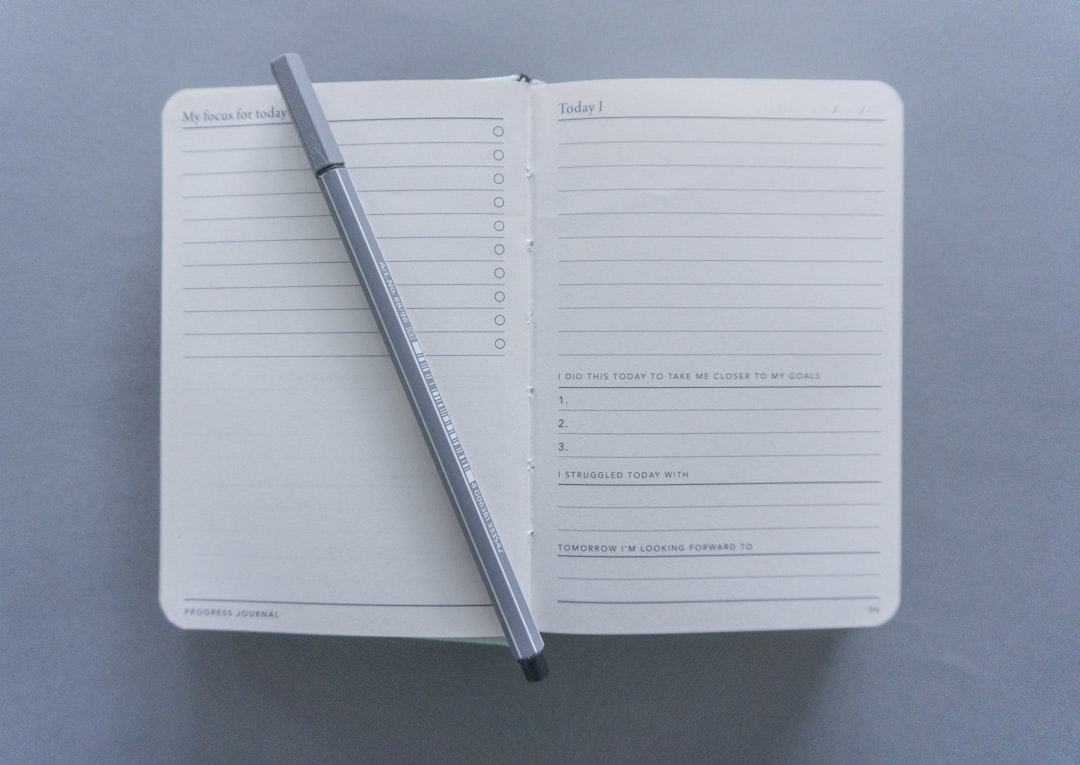Introduction
Welcome to this blog post on how to live a productive and fulfilling life! In today’s fast-paced world, it can be challenging to find balance and maintain a sense of fulfillment in our daily lives. However, by implementing some simple strategies and adopting a positive mindset, we can take steps towards living a more purposeful and rewarding life.
Throughout this blog post, we will explore various aspects that contribute to a productive and fulfilling life.
Setting Clear Goals and Priorities
When it comes to leading a fulfilling and purposeful life, setting clear goals and priorities is essential. Without a roadmap, it’s easy to feel lost, overwhelmed, or unsure of the steps to take. That’s why dedicating time and effort to define your goals and priorities can make a world of difference in both your personal and professional life.
Setting goals can help you stay focused and motivated. Think about what you want to achieve in different areas of your life. Do you have specific career goals? Are there personal milestones you want to reach? What about your relationships or hobbies?
Take a moment to reflect on what truly matters to you and what you want to accomplish. It’s important to set specific, achievable, and measurable goals that align with your values and aspirations.
Remember, your goals should be adaptable and adjustable as you progress. Life is constantly changing, and it’s okay to modify your goals accordingly. This flexibility allows you to stay on track while embracing new opportunities or adjusting to unforeseen circumstances.
In addition to setting goals, also consider prioritizing your tasks and responsibilities. Not everything in life is equally important or urgent. By identifying and focusing on what truly matters, you can maximize your time and energy.
A helpful strategy is distinguishing between urgent and important tasks. Urgent tasks usually demand immediate attention, but they may not necessarily contribute to your long-term goals or values. On the other hand, important tasks directly align with your goals and values, even if they don’t have an urgent deadline.
By prioritizing important tasks, you can ensure that you are allocating your time and resources to things that truly matter to you. This way, you avoid getting caught up in busywork or allowing the urgent but less significant tasks to dominate your schedule.
It’s important to approach goal-setting and prioritization with an open mind. What works for someone else may not work for you, and that’s perfectly okay. It may take some trial and error to find a system that resonates with your unique needs and preferences.
Lastly, don’t forget to celebrate your accomplishments along the way, no matter how small they may seem. Each step forward is significant, and acknowledging your progress will keep you motivated and inspired on your journey towards achieving your goals.
Each step forward is significant, and acknowledging your progress will keep you motivated and inspired on your journey towards achieving your goals.
Establishing a Morning Routine
When it comes to starting your day on the right foot, establishing a morning routine can be a game-changer. A well-structured morning routine can set the tone for the rest of your day, helping you stay focused, productive, and centered. It can provide a sense of stability and predictability, allowing you to approach each day with intention and clarity.
The beauty of a morning routine lies in its flexibility. There’s no one-size-fits-all approach; instead, you have the freedom to tailor it to suit your needs, preferences, and goals. Whether you’re an early riser or a night owl, finding a routine that resonates with you is key.
So, how can you go about establishing a morning routine that works for you? First and foremost, take some time to reflect on your priorities and goals. What are some activities or rituals that align with these aspirations? It could be something as simple as starting your day with a cup of coffee while journaling, or maybe you prefer dedicating time to exercise and meditation before diving into work.
The key is to incorporate activities that nourish your mind, body, and soul. It’s about finding a balance between productivity and self-care, allowing yourself to recharge while setting the stage for a productive day.
An important component of any morning routine is giving yourself sufficient time to ease into the day. Instead of rushing around frantically, try waking up a bit earlier to allow yourself leisurely moments. This may involve creating a calm environment, leaving your phone aside for a while, or indulging in activities that bring you joy, such as reading, listening to music, or enjoying a nutritious breakfast.
Remember, establishing a morning routine is all about experimentation and adaptation. It may take some trial and error to find the right combination of activities that resonate with you. What works for others may not work for you, and that’s perfectly okay. Be open-minded and embrace the process of self-discovery as you fine-tune your routine.
Another key aspect to consider when developing a morning routine is consistency. Sticking to a routine, even on weekends or during vacations, can help maintain a sense of stability and maximize its benefits. Of course, it’s important to be flexible and allow yourself some room for spontaneous activities, but having a general framework to follow can provide structure and help you make the most out of your mornings.
Establishing a morning routine can be a transformative habit that sets the tone for a successful and fulfilling day ahead. By aligning your activities with your goals and priorities, giving yourself time to relax and engage in activities that bring you joy, and maintaining consistency, you can create a routine that supports your overall well-being. So, why not give it a try? Rise and shine to a morning routine that works for you, and watch as it positively impacts your life.
A well-structured morning routine can set the tone for the rest of your day, helping you stay focused, productive, and centered.
Practicing Time Management Techniques
When it comes to managing our time effectively, we often find ourselves struggling to strike a balance between work, personal life, and everything in between. However, by implementing a few simple time management techniques into our daily routine, we can significantly improve our productivity, reduce stress levels, and ultimately take control of our lives.
One effective technique is creating a to-do list. Begin each day by jotting down the tasks you need to accomplish, giving priority to those that are urgent or have strict deadlines. By having a clear and organized list, you can stay focused and ensure that important tasks are not forgotten or neglected.
Another useful practice is the Pomodoro Technique. This technique involves breaking your work into manageable intervals, typically 25 minutes, with short breaks in between. By working in focused bursts, you can maintain high levels of concentration and prevent burnout. This method is especially helpful for those prone to procrastination or distractions.
Delegating tasks is another essential aspect of effective time management. Sometimes, it may be more efficient to delegate certain responsibilities to others, allowing you to focus on higher-priority tasks or to simply have more time for yourself. Remember, it’s okay to ask for help and share the workload.
Setting boundaries and saying no are also critical time management skills. It’s important to recognize our limits and avoid taking on too much. Learning to say no when necessary can prevent overwhelming yourself and ensure that you have enough time and energy to focus on what truly matters.
Another technique that can help improve time management is prioritizing tasks based on their importance and urgency. By being aware of the difference between important and urgent tasks, you can allocate your time and energy accordingly. This way, you can avoid getting caught up in less important tasks and focus on what truly moves you closer to your goals.
In addition to these techniques, it’s crucial to be flexible and adaptable. Not every strategy will work the same way for everyone, and what works for you today may not work as effectively tomorrow. Therefore, it’s essential to experiment with different methods and find the ones that resonate with your unique needs and preferences.
Remember, practicing time management techniques is a journey, and it’s okay to make mistakes along the way. Focus on the progress you make rather than striving for perfection. With time, patience, and persistence, you will find a rhythm that allows you to maximize your productivity and enjoy a more balanced and fulfilling life.
Not every strategy will work the same way for everyone, and what works for you today may not work as effectively tomorrow.
Embracing Regular Exercise and Healthy Lifestyle Habits
Now that we have discussed the importance of setting clear goals, establishing a morning routine, and practicing effective time management techniques, it’s time to dive into another essential aspect of achieving a balanced and productive life – embracing regular exercise and healthy lifestyle habits.
We all know that exercise is good for us, but it often takes a backseat in our busy lives. However, incorporating physical activity into our daily routine can have numerous benefits that extend far beyond just physical health.
Regular exercise not only improves our cardiovascular health, strengthens our muscles, and helps us maintain a healthy body weight, but it also enhances our mental well-being. It boosts our mood, reduces stress levels, and increases our overall energy and productivity.
So, how can we make exercise a part of our daily lives? It doesn’t have to be complicated or time-consuming. Find an activity that you enjoy – it could be running, swimming, cycling, dancing, or even practicing yoga. The key is to engage in something that you genuinely look forward to and find fulfilling.
You can start by setting aside a specific time each day for your exercise routine. Whether it’s a morning jog, a lunch break walk, or an evening workout session, consistency is key. By making exercise a priority and treating it as an essential part of your schedule, you are more likely to stick to it and reap the benefits.
Additionally, focusing on healthy lifestyle habits goes hand in hand with regular exercise. Eating a balanced diet, getting enough sleep, and staying hydrated all contribute to our overall well-being. Fueling our bodies with nutritious foods and giving ourselves enough rest and recovery time are essential components of leading a healthy and fulfilling life.
Remember, embracing regular exercise and healthy lifestyle habits is not about perfection. It’s about finding what works best for you and incorporating small, sustainable changes into your daily routine. Be adaptable and open-minded, and don’t be too hard on yourself if you miss a workout or have an indulgent meal now and then. The key is to maintain consistency and make gradual progress towards a healthier lifestyle.
Incorporating exercise and healthy habits into our lives can be challenging at first, but the positive impact it has on our physical and mental well-being is well worth the effort. So, let’s take a proactive approach and prioritize our health, knowing that by doing so, we are investing in our overall happiness and productivity.
So, how can we make exercise a part of our daily lives?
Cultivating Mindfulness and Gratitude
Now that we have covered setting clear goals, establishing a morning routine, practicing time management techniques, and embracing a healthy lifestyle, it’s time to delve into the importance of cultivating mindfulness and gratitude in our daily lives. While these concepts may seem abstract, they play a vital role in our overall well-being and can greatly impact our ability to lead fulfilling lives.
Mindfulness is the practice of being present in the moment, without judgment or attachment. It involves paying attention to our thoughts, feelings, and sensations without getting caught up in them. By cultivating mindfulness, we become more aware of our actions and reactions, allowing us to make conscious choices rather than acting on autopilot.
Practicing mindfulness can have numerous benefits, including reduced stress, improved focus and concentration, heightened self-awareness, and enhanced emotional well-being. So how can we incorporate mindfulness into our daily lives?
One simple way is to start with a daily mindfulness meditation practice. Find a quiet space, sit comfortably, and close your eyes. Take a few deep breaths and focus your attention on the sensation of your breath moving in and out of your body. Notice any thoughts or distractions and gently bring your attention back to your breath. Start with just a few minutes each day and gradually increase the duration as you become more comfortable.
In addition to meditation, mindfulness can also be integrated into our daily activities. Whether you’re washing dishes, walking in nature, or having a conversation with a loved one, try to bring your full attention to the present moment. Notice the sensations, sights, and sounds around you without judgment.
Gratitude is another powerful practice that can help shift our mindset and increase our overall happiness. By intentionally focusing on what we are grateful for, we train our minds to see the positive aspects of our lives, even in challenging times.
To cultivate gratitude, take a few minutes each day to write down three things you are grateful for. They can be as simple as a delicious cup of coffee or a smile from a stranger. By consistently practicing this gratitude exercise, you’ll begin to notice the abundance and beauty that surrounds you.
Another way to cultivate gratitude is by expressing appreciation to others. Take the time to acknowledge and thank the people in your life who have made a positive impact. By spreading gratitude, we not only uplift those around us but also strengthen our own sense of well-being.
Remember, cultivating mindfulness and gratitude is not a one-time task but a lifelong journey. It requires patience, practice, and a willingness to adapt. Some days may be more challenging than others, but each moment presents an opportunity for growth and self-discovery.
So, as you continue on your path of personal growth and well-being, I encourage you to embrace mindfulness and gratitude as powerful tools to enhance your overall happiness and fulfillment. The more you cultivate these practices, the more resilient and grounded you’ll become, allowing you to navigate life’s ups and downs with grace and ease.
Take a few deep breaths and focus your attention on the sensation of your breath moving in and out of your body.
Seeking Continuous Learning and Personal Growth
When it comes to personal development, the journey is never-ending. Our lives are constantly evolving, and as we grow and change, it’s essential to seek continuous learning and personal growth. This seventh chunk of our blog post is all about embracing a mindset of curiosity and the willingness to step outside of our comfort zones in order to expand our knowledge and skills.
One of the most effective ways to embark on a path of continuous learning is to cultivate a love for reading. Whether you prefer self-help books, biographies, or fiction, reading widens your perspective and exposes you to new ideas and ways of thinking. It allows you to tap into the wisdom and experiences of others, giving you valuable insights that you can apply to your own life.
But reading is just one avenue for learning. We live in an age where information is readily available at our fingertips, so why not take advantage of it? Online courses, podcasts, webinars, and TED talks are just a few examples of the vast resources that can help you acquire new skills or deepen your understanding of various subjects.
It’s also important to surround yourself with a network of like-minded individuals who inspire and challenge you. Whether it’s attending industry conferences, joining mastermind groups, or participating in online communities, connecting with others who share your passion for growth can provide you with valuable insights, feedback, and support.
However, personal growth goes beyond acquiring knowledge and skills. It also involves developing self-awareness and self-reflection. Taking the time to introspect and evaluate your actions, thoughts, and beliefs can help you identify areas for improvement and facilitate personal growth. Journaling, meditation, and therapy are just a few tools you can use to cultivate self-awareness and promote personal development.
Moreover, personal growth encompasses not only your professional life but also your personal relationships and overall well-being. It’s about constantly reassessing your values, goals, and priorities, and making the necessary adjustments to align them with your evolving self. It’s about investing in your physical, mental, and emotional health, and nurturing the relationships that truly matter to you.
Remember, personal growth is not a destination but a lifelong journey. It’s about embracing change, challenging yourself, and staying open-minded to new possibilities. By seeking continuous learning and personal growth, you’ll not only become a better version of yourself but also inspire those around you to embark on their own transformative journeys.





